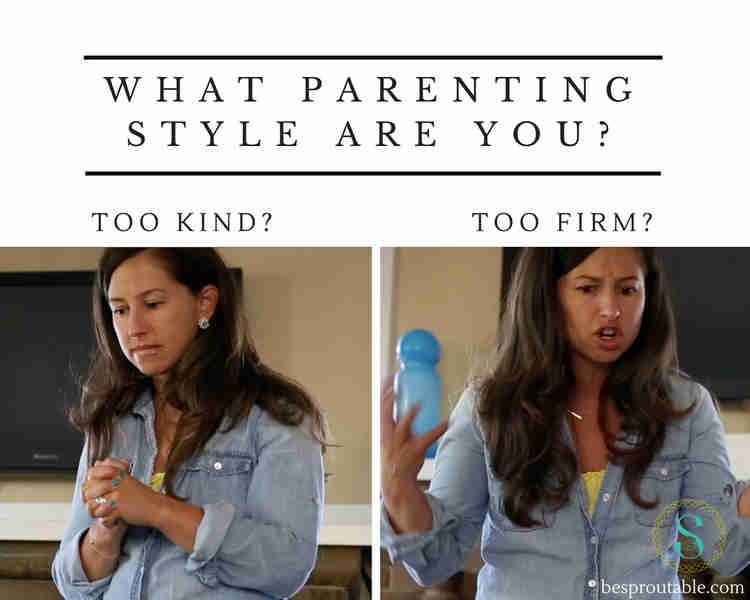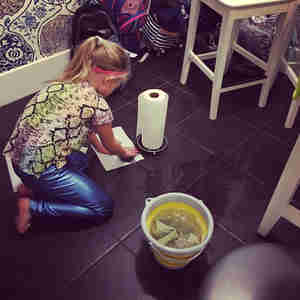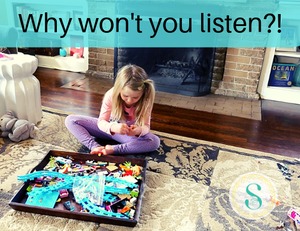When You are Not on the Same Parenting Page
True story: One day my nine-year-old came home from school super bummed. She grew teary describing her frustration with the inequity in P.E. teams made by the teacher. Time and time again, her team continued to lose while “all” of her other friends were on the other team. I validated her feelings, kept my face open and empathetic and gave her a big hug. “That must feel unfair. I would feel sad if I was playing against my friends too. It can be hard to not have any control over a situation.” She wiped her tears, nodded and looked up at me during our hug with relief for being understood and validated. Inside, I was patting my back and climbing on to a very high horse. Just at that moment, the baby woke up from her nap and as I was pulling her out of the crib my husband got home and greeted our daughter. I overheard her retell the P.E. drama and just as I walked into the kitchen, heard his response:

“You know what? When you go into those games feeling like a loser, you ARE going to lose. When you only see your teammates as losers you ARE going to lose. You need to practice playing with all kinds of people and you don’t get to play with your friends every time. This is a great opportunity to build a little grit and perseverance! Show some leadership and sportsmanship and have a better attitude!”
Our daughter looked at me with wide eyes and the edges of her mouth started to turn up in a little smile. I burst out laughing. “I had a different response,” I told him. “I bet you did!” he replied.
In every Positive Discipline parenting class I teach, we talk about parenting styles and the questions inevitably come up. “What if we have different styles? What if we were raised differently? How can I not be like my parent was? What if the grandparents have different styles and spend a lot of time with my kids?”
Let me explain how you can take any background and end up on the same island. (This, honestly, is why I love Positive Discipline!) The key is to be kind (connected) AND firm at the same time. What often happens is that a parent can be permissive (lots of kindness, not a lot of firmness) or authoritarian (a lot of firmness, not a lot of kindness). I think of it as the jellyfish (loosey-goosey) versus the brick wall. When one parent favors one side, the other goes even more in the other direction to “balance” it out. This results in bad cop, good cop, and is probably the dynamic you had growing up. Generationally speaking, the grandparents were likely raised in this way too. When dad said jump, mom said: “how high?” (Thankfully, that shit is OVER.)
Instead, Positive Discipline offers us an alternative. One that is consistent, respectful, and gives us the long-term results we are searching for. BOTH parents then leave their island (too firm or too kind) and jump to a NEW island where you are connected AND firm at the same time. Instead of the jellyfish or the brick wall, think of it as a BACKBONE. This can look very different from parent to parent (or grandparent) and it should. The connection part can and should be personal. My kids have one grandmother who reads to them for hours and fills their brains with random facts and trivia. The other paints with them and runs circles around them at the park. I love to plan events and play cards and tell stories with my girls. My husband loves to play Legos and build forts and create obstacle courses with them. Our children should have lots of love and connection from others—that’s ok. Where everyone needs to get on the same page is on the firmness piece.
This comes down to: What is the rule?
Connection= I see you. I love you. You are enough.
Firmness= What needs to happen for everyone to share space and coexist respectfully.
Steven Foster, Positive Discipline author and preschool teacher, breaks down connected and firm responses by using these elements:
- Does it show understanding of the child’s point of view?
- Does it show respect for the needs of the adults?
- Does it show respect for the needs of the situation?
- Does it offer the child limited choices?
“I know (or see or understand) that you _______________ AND we still need to ______________. Would you like to _____________________ or ______________? You decide.
“I know that you really want to stay at the park AND we still need to go home for lunch. Would you like to stomp home like a dinosaur or fly like a bird? You decide.”
Step one for you and your partner is to decide on what the rules are, and this is most powerful to do through ROUTINES. Decide as a family what is expected in the morning and bedtimes (triggering times), or even at meals, so when your kiddo takes you down you can both connect (in your own ways) and be firm at the same time (stick to the same rule). In order to do this, you have to actually communicate with each other! Something like, “Hey, I love you and want to have smoother mornings where we all feel good. Let’s decide on the routine together so we know what to expect.” Yep, this works with both 4-year-olds and 40-year-olds. Then, it comes down to modeling. You get to stand in your own truth and lead by example.
What happens when one parent is NOT being connected and firm at the same time? Do you jump in and minimize their “authority”? The key is to be helpful, not hurtful. You can connect and lead everyone back to the firm rule OR if it is too hot then create space and breaks.
Speak to the child, not the parent in this scenario, then offer to tap in showing teamwork.
“You are having fun in the bath and Papa has asked you many times to start cleaning up your toys. Which toy is going to be the leader? Papa let me know if you want to swap out. You can finish the dishes and I can wrap this up if that would help.”
It can feel conflicting and even scary if you did not have positive parenting role models growing up. With the Positive Discipline framework, you get to choose an entirely different path by connecting (hugs, humor, softness in your body, getting into your child’s world) and leaning on routines and clear expectations. It can be helpful to do some deeper personal work on this. Dr. Dan Siegel’s “Parenting From the Inside Out” is an excellent book that gives insight and exercises. He writes,
“Even with love and the best of intentions, we may be filled with old defenses that make our children’s experiences intolerable to us…then, the unsuspecting child becomes the recipient of hostile responses that become woven into his internal sense of identity and directly impair his ability to tolerate those very same emotions in himself. If we have leftover or unresolved issues, it is crucial that we take the time to pause and reflect on our emotional responses to our children. By understanding ourselves we give our children the chance to develop their own sense of vitality and the freedom to experience their own emotional worlds without restrictions and fear.”
You and your partner will be able to align guidelines, expectations, and routines when you decide together what your long-term goals are. Who do you want your kiddos to be when they are 25? What qualities, characteristics or gifts do you hope they will have?
Reflecting on the P.E. drama, we were BOTH right! In my parenting moment, I wanted to teach empathy, compassion, and the ability to feel her feelings without rescuing. Meanwhile, my husband’s focus was on teaching grit, perseverance, and sportsmanship. We were both intentional and responsive, just in our own way.
What parenting style are you? Take our quiz to find out.
See this in action!
Our online Positive Discipline parenting course shows you real parents and real families practicing the tools.





Comments